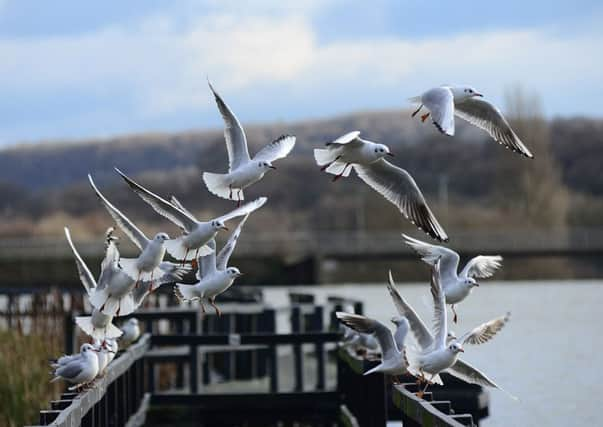Picture Post: Winter birds getting into a flap on the water


But while our countryside can sometimes feel barren at this time of year it can also bring some interesting visitors to our shores, such as Snow Bunting that fly over from Scandinavia.
Flocks of birds congregate around our wetlands and estuaries including Black headed gulls seen here in their winter plumage as they’re about to take flight from the boardwalk at Worsbrough Mill Country Park near Barnsley.
Advertisement
Hide AdAdvertisement
Hide AdThese gulls are common across large swathes of the country, particularly in the east, although they aren’t quite what their name would suggest.
It’s not really a black-headed bird, more chocolate-brown, and for much of the year it actually has a white head, as you can tell from this picture.
To regular visitors to the reservoir at Worsbrough these quarrelsome and noisy birds will be a familiar sight, but they’re far from the only one to be found here.
The country park itself covers more than 240 acres and holds Local Nature Reserve status and its reservoir, popular with anglers, is a haven for wildlife.
Advertisement
Hide AdAdvertisement
Hide AdThe reservoir has an interesting history. Completed in 1804, it was originally built to supply water to the Worsbrough branch of the Dearne and Dove canal, which linked Worsbrough to the inland port of Goole.
Back in 1810, over 2,000 boats used the canal to carry goods to and from the factories that sprang up alongside it.
But after the arrival of the railways its importance slowly dwindled and it was closed to traffic in 1906. It was finally abandoned in 1961, although a section of the canal that still remains can be seen across the road from the main car park.
Today, the reservoir is no longer a cog in the wheel of industry, but a popular haunt with nature lovers eager to feast their eyes on the surrounding meadows and abundance of wildlife.
Technical details: Nikon D800, Nikon 70-200mm lens, ISO 400, f5.6, shutter speed 800th sec.